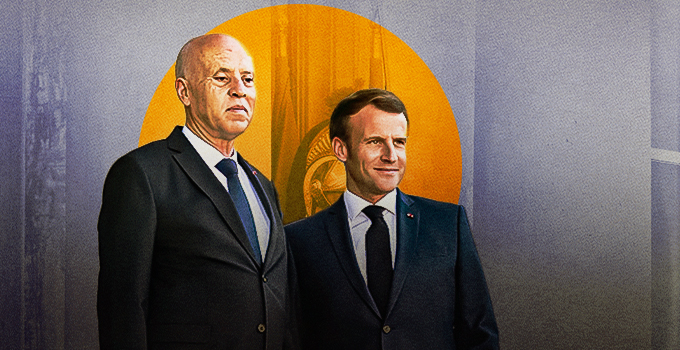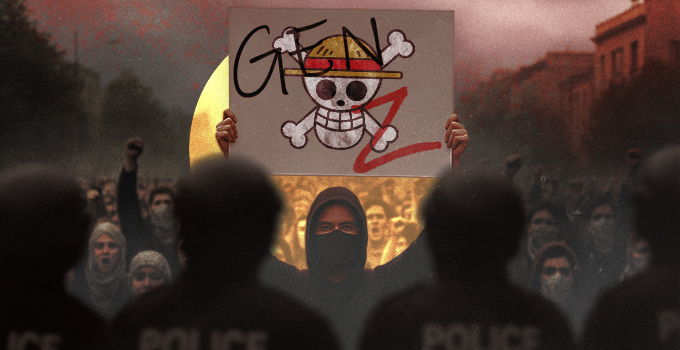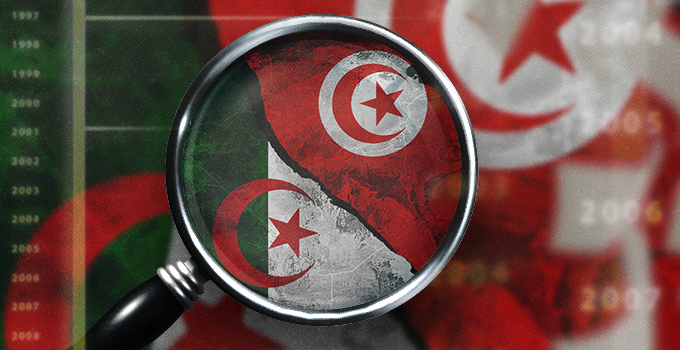
August 27 marked a decisive turning point in the Tunisian government’s relationship with the Salafists. Indeed Ansara al-Shari‘a in Tunisia (AST), the most important Salafi group in Tunisia, was officially designated as a terrorist organization. Why this abrupt acceleration toward the systematic repression of the movement has occurred? What does it mean this government’s and, above all, Ennahda’s move? This comes in the midst of a political and security crisis that is crossing the country and in front of which Ennahda, the largest Islamic party who leads the current ruling coalition, is likely to be increasingly weakened. Tunisian political juncture can certainly help us to better interpret Ennahda’s decision. A decision which, once again, highlights one of the most distinguishing characteristics of the Rachid Ghannouchi’s party: opportunism.
Since the 2011 Ennahda’s electoral victory, Tunisia has divided in two. The major cleavage emerged has been the one between Islamists and secularists and this represents a new element in Tunisian political and social context. Undoubtedly this was the result of the political liberalization, that allowed Ennahda to enter into politics and participate to the institutional life, while under the Ben ‘Ali’s regime it had always been repressed. This is above all an ideological dispute, more than a division along socio-economic classes: many have criticized the party for its positions considered as too “Islamist” . Therefore, in this first phase of transition Ennahda needed to conquer the Islamic electoral base, as well as to prove to be truly compliant to democracy and pluralism. It was for this reason that, while agreeing to form a coalition government with two secular and socialist political parties – CPR and Ettakatol – it has pursued a parallel strategy aimed at not alienating the more conservative and radical Islamic circles. With the emergence of the different Salafi movements and of AST, Ennahda found itself in a difficult position. Indeed, it had to take off the radical Islamist label, while at the same time avoiding to confront with the Islamist movements emerged on its right. While conducting its moderation and institutionalization process, Ennahda has tried to integrate the Salafis into the political landscape. Its response to some violent acts committed by them – such as the assault on the offices on Nessma TV for having broadcasted the film Persepolis; the attack on an art exhibition in La Marsa accused of insulting Islam, the attacks on alcohol sellers all over the country and other similar violence’s episodes – was never too hard. At the same time, although it attracted criticism from its most ardent detractors, Ennahda could have the merit for stand as the only political – and institutional – actor trying to act as a moderator of the Salafists and as a mediator between the more radical leftist and Islamist forces.
The major concern of Ennahda was to lose support among conservative Islamist environment. It is important to underline that the radical and most conservative Islamist branch still represents a very minority among Tunisian society, but at the same time it was crucial for Ennahda not to lose their support, for at least two reasons. First, Ghannouchi’s party has always tried to be the only representative of political Islam in Tunisia; second, it has tried to avoid internal divisions that would weakened the Islamist front. For this reason it initially avoided an open confrontation with AST, although the latter does not in any case showed sympathy for the Islamic party. Ennahda’s position was certainly awkward: had it seriously attacked the Salafis, it would risk losing credibility and trust among Islamic circles; had it continued to tolerate their activities, it would provide its secularist detractors more and more excuses to attack it. Therefore, as long as he could Ghannouchi has always turned a blind eye to the AST’s activities. However, the very Tunisian internal situation has progressively changed and the conditions in which Ennahda acted have become different. On the one hand political violence has emerged with the shocking Chokri Belaid’s and Mohammed Brahmi’s murders. On the other hand, the threat of jihadist violence has unleashed on Tunisia with the attacks on Tunisian security forces on the Jebel Chaambi, at the Algerian border. How have these two factors influenced Ennahda’s behaviour toward Salafism?
Since the beginning of 2013 some opinion polls have shown the decline in the popularity of Ennahda and have defined a scenario in which the opposition formation Nida Tounes would be the first political force in the country, surpassing the Islamic party. As a consequence, fears of losing ground led Ennahda to a change of tactics. Ennahda seems to have realized that, in this second phase, winning the trust of the citizens who do not naturally belong to its electoral basin could be even more important than the consensus’ consolidation among Islamic conservatives. The Egyptian example was a warning one: to sharpen the confrontation/clash with secularists could lead to loss of credibility and, consequently, of power. And keeping the power is the priority for the Islamic party. That’s why, last May, Prime Minister Ali Laarayedh has passed to a phase of confrontation with AST, by banning its annual meeting, which was held to take place in Kairouan. Surely the basis of that decision was the need to give a signal of moderation to the secularists, rather than a genuine awareness of the actual movement’s dangerousness. This has to do with the opportunism and pragmatism that Ennahda has always shown during all its existence. Whether or not its intentions are genuine, the Islamic party seems to have been realized that such a hard confrontation between itself and the secular opposition could not only block the institutional transition, but also be detrimental for its political purposes. In other words, Ennahda is trying all efforts in order to maintain its position and not to give up power, as it did in the aftermath of Belaid’s murder. However, compared to all other previous political crisis, the current one has come while Tunisians are to be called to the ballot box. This means that Ennahda has no time to lose if it wants to present itself as a sincere political party acting for the good for Tunisia and not for its own interests. Therefore, to publicly condemn AST would be a tactical move aimed at recover trust among citizens. On the other hand, this has led to an open confrontation with the Salafists, who have gradually lost all confidence in Ennahda.
The scenario for Ennahda has become even more complicated with the escalation of the political crisis following Mohamed Brahmi’s murder, on July 25. The opposition pointed the finger against the Islamic party itself, blaming it for the climate of violence that has arisen in the country and for being still too soft and ambiguous towards the Salafis. The deterioration of the situation on the Jebel Chaambi contributed to worsen the government’s position. On July 29, Tunisia was shocked by an attack against an army patrol in that area, in which 8 soldiers were killed. The rough images of the soldiers’ mutilated bodies have been spread by the major Tunisian broadcasters, arousing outrage and deep concern about the jihadist activities within, although it is still unclear who is responsible for the attacks. Two days earlier, on July 27, a bomb had exploded in Tunis in the district of La Goulette. Moreover, on July 31, another explosive device had detonated near Mhamdia, a few kilometres South of the capital. Although these incidents have caused no casualties, they have created a climate of fear among the Tunisians, fearful that terrorism could systematically affect the urban centres. As if that were not enough, the government and the army have shown clear difficulties at both political and military levels. From the political point of view, those responsible for the terrorist attacks have not been clearly identified; from the military one, the army proved to be unprepared to deal with the terrorist threat.
At this point Ennahda is facing a double challenge. First, it must convince the Tunisians that it’s not involved in any act of violence that is occurring in the country. Second, as a government party, it must ensure their citizens about the territory’s protection and the security within their boundaries. Detecting and combating the alleged terrorists should be the first step in this direction. This is true especially in a delicate phase in which Tunisians continue to protest against the government and the latter is locked in a stalemate that blocks the transition. In this context finds place the accusations against AST to be behind major acts of violence in the country. From political assassinations to the Jebel Chaambi terrorist actions, Ennahda seems to shift the blame to the Salafi movement. By officially designating AST as a terrorist movement, Ennahda’s leaders want to distance themselves from Salafism – whether or not the latter is responsible for the violence across Tunisia – and to reassure citizens about having identified the enemy to fight. This move is aimed at building consensus among the more sceptical electorate and inevitably it comes at the cost of losing consent among the most conservative and radical Islamists. Moreover, in doing so Ennahda is presenting itself as the only legitimate representative of political Islam in Tunisia.
Can this strategy work? In fact, Ennahda is playing a very dangerous card, which presents many uncertainties. Everyone knows that the perpetrators of the terrorist acts on the Jebel Chaambi are not – at least not only – internal Salafi elements. Rather, there are also infiltrations from Algeria itself, as warned several times by the Algerian intelligence. AST’s repression could has two consequences: first, Ennahda turns a blind eye towards other actual Tunisian security threats, which continue to persist; second, this strategy is likely to provoke a further Salafi radicalization. The government have not produced sufficient evidences for the supposed connections between AST and the Jebel Chaambi jihadists. Moreover, although AST has showed some degree of violence, it also presents less radical elements dedicated to preaching, rather than to jihad. At the same time, some evidence suggests that isolated new Salafi-jihadist cells are emerging in Tunisia – possibly even from the AST itself – formed by the younger generations and whose activities are mixed with local criminality ones, such as drug trafficking. Indeed, it is interesting to note that a new division in affecting the Salafi milieu itself, as the younger ones are becoming more and more radical. Unlike the most general division between Islamists and secularists, the reasons behind the involvement of these young Tunisians in such activities seem to be more socio-economic, than just ideological. These new generations suffer from the Tunisian critical economic conditions, such as the high unemployment rate and the gap between central and peripheral areas. They feel completely abandoned by the state and have reached a degree of disenchantment with politics that place them outside the system. In this sense, their frustration is similar to that of all the young population in Tunisia, but they have identified radical Salafist ideology – if not even jihadism – as the response. AST itself appears to be quite disoriented, as it is not always able to cope with these new trends, especially if it is prevented to operate.
Dialogue with the most moderate AST members may also be functional to isolate the radical elements and to go through their integration process within the political institutions under construction. On the contrary, to treat the Salafists as a terrorist movement and to repress them may create further tensions and contribute to the escalation of violence. Moreover, it also precludes all possible attempts made by AST leaders to supervise what’s happening within its ranks. In order to pursue its own political purposes, Ennahda is addressing the issue of Salafism exactly in the same way that, for decades, the regime of Ben ‘Ali had addressed Ennahda itself, with all the consequences this may have in terms of national reconciliation. It’s true that the AST leaders themselves should demonstrate their willingness to dialogue and should first of all condemn violence if they want to be recognized as a legitimate reality in the new Tunisia. But, on the other hand, a party that has government responsibilities like Ennahda demonstrates its weakness in repressing AST without sufficient evidence existing to blame it for the acts of terrorism that have occurred.




iThere are no comments
Add yours